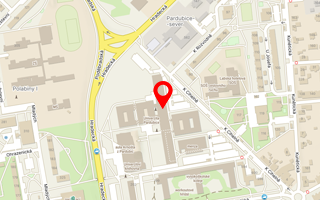Transverse transport effects in collinear and canted antiferromagnetic hexagonal alloys
Provider: Grantová agentura ČR
Programme: Standardní projekty
Implementation period: 01.01.25 - 31.12.27
Workplace:
Fakulta chemicko-technologická - CEMNAT
Investigator: Drašar ČestmírTeam member: Navrátil Jiří
Description:
The project deals with a theoretical investigation of transverse transport properties, namely anomalous Hall and Nernst effects (AHE, ANE), in solid solutions exhibiting antiferromagnetic (AFM) order with broken time-reversal symmetry (noncolinear, altermagnetic). Three different calculation approaches will be compared: 1) the virtual crystal approximation, 2) the coherent potential approximation, and 3) the calculation in supercell combined with unfolding method. The theory will be confronted with experiments on single crystals. For the case study we will employ the unique Mn(1-x)Cr(x)Sb (x=0-1) and CrSe systems of hexagonal symmetry exhibiting various, predominantly AFM, structures with high ordering temperatures. The MnSb is ferromagnet with TC=600K, the CrSb belongs to altermagnets with exceptionally high TN=710K and spin splitting, but suppressed AHE due to symmetry reasons. Using our approaches, we intend to demonstrate the presence of AFM phases with non-zero AHE(ANE) within this system (x~0.4) and validate suitable methods to reveal such phases in solid solutions compounds.
The project deals with a theoretical investigation of transverse transport properties, namely anomalous Hall and Nernst effects (AHE, ANE), in solid solutions exhibiting antiferromagnetic (AFM) order with broken time-reversal symmetry (noncolinear, altermagnetic). Three different calculation approaches will be compared: 1) the virtual crystal approximation, 2) the coherent potential approximation, and 3) the calculation in supercell combined with unfolding method. The theory will be confronted with experiments on single crystals. For the case study we will employ the unique Mn(1-x)Cr(x)Sb (x=0-1) and CrSe systems of hexagonal symmetry exhibiting various, predominantly AFM, structures with high ordering temperatures. The MnSb is ferromagnet with TC=600K, the CrSb belongs to altermagnets with exceptionally high TN=710K and spin splitting, but suppressed AHE due to symmetry reasons. Using our approaches, we intend to demonstrate the presence of AFM phases with non-zero AHE(ANE) within this system (x~0.4) and validate suitable methods to reveal such phases in solid solutions compounds.
